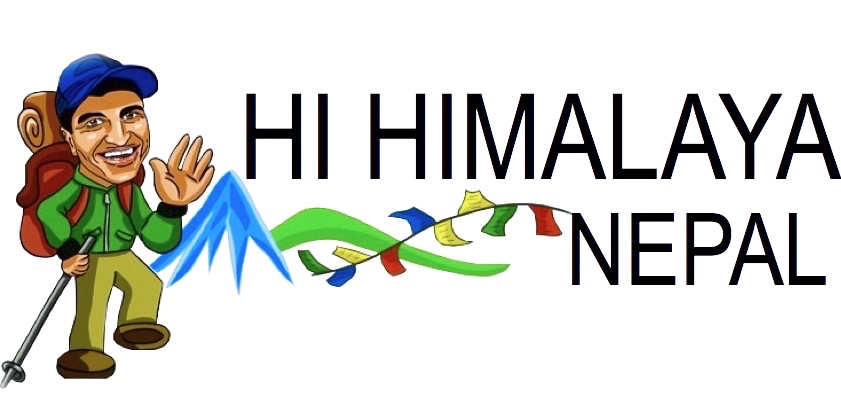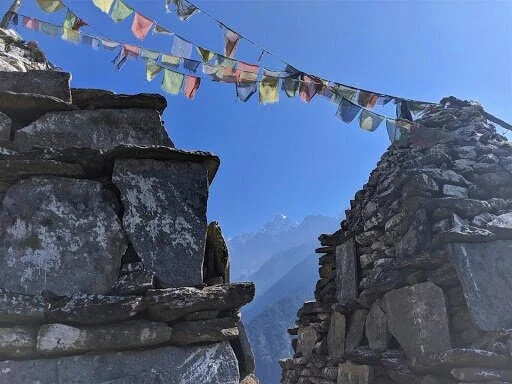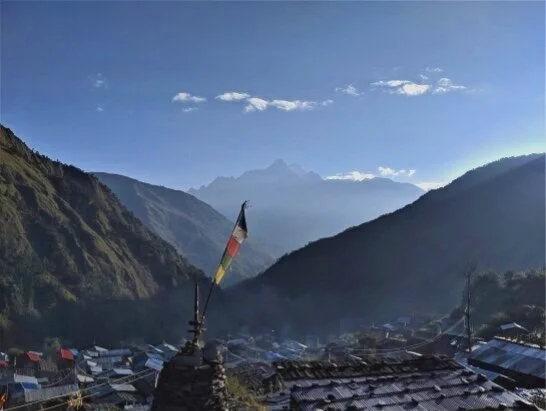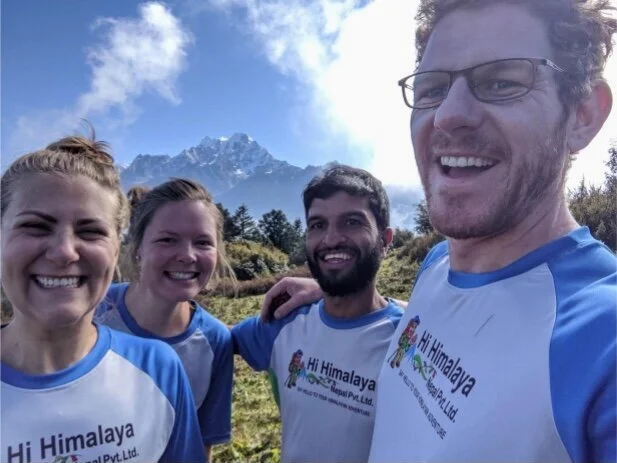Another Side to Langtang - Trekking the Tamang Heritage Trail
Established in 2002, the Tamang Heritage Trail continues to be a hidden gem amongst the vast array of trekking options in Nepal. While it may not offer the celebrity peaks of other regions, it more than makes up for this with visits to traditional Tamang villages along a scenic route close to the Tibet border. While still challenging, it avoids the higher altitudes and crowds of some of the Himalayas more popular routes.
The Tamang
Tamang women selling traditional belts and skirts
The Tamang are one of Nepal's largest ethnic groups. With roots that stretch across the border to Tibet, they are famous for their unique dress, culture and language. A large number of Tamang communities are situated in the Himalayas, predominantly around the Rasuwa and Sindupalchowk districts, home to the Langtang Valley National Park.
Perhaps in part due to their success in maintaining a distinct culture and identity¹ the Tamang are one of the more marginalised groups within Nepal. In a country where poverty and lack of public services is all too common, the Tamang suffer from relatively poor access to education, medical and sanitation facilities².
Along with the rest of Nepal, the Tamang suffered greatly from the devastating 2015 earthquake that claimed the lives of almost 9000 people.
A subsequent report concluded that It is the poverty, neglect and discrimination against Tamangs that makes them even more vulnerable to disasters like earthquakes, landslides and floods²
The people who live along the Tamang Heritage Trail have worked hard to rebuild their communities, businesses and the route itself; we found them, even for Nepal, especially charming, hospitable and kind. While the numbers of trekkers hasn't yet reached pre-2015 levels, it is hoped that continued investment, as well as the 'Visit Nepal 2020' campaign, will help to increase visitors to this region in the future.
Tamang lady weaves traditional fabric
Tamang Heritage Trail
Yadab Itani of Hi Himalaya Nepal
With such a range of options, planning a trek in the Himalayas can be a daunting task; luckily Yadab and his team were able to offer us great advice that suited our specific needs. As well as being on a fairly tight schedule, this was one member of our group's first time in the Himalayas and they were a little nervous of trekking at altitude.
Keen to avoid the crowds and experience some of the local culture that can be a little diluted on more popular routes, we asked Yadab for some recommendations. We had previously trekked to nearby Gosaikunda lake as well as the main Langtang Valley, so we knew how beautiful this remote area was. As a result, we didn't take much persuading that The Tamang Heritage Trail would be our best option.
Following a day's drive from Kathmandu, we arrived in Syphru Besi, gateway to the Langtang National Park. To the North, the road winds its way to a Chinese Tibet border crossing; head East and you'll join the Langtang Valley trail. Our route took us straight up and out of the village, heading west towards the Tamang village of Gatlang (~2200m).
Gatlang
Nestled at the western end of the valley, with views of Langtang range, Gatlang is a bustling rural settlement. It boasts impressive examples of traditional stilted homes, some still with their original wooden slate roofs and gorgeous carved windows. We stayed at the welcoming Gatlang Guesthouse and enjoyed the most incredible views. There aren't many things better than sitting amongst a waking village, steaming cup of tea in hand, watching the first rays appear over the Himalayas.
Morning view over Gatlang Village
Tip: There is a daily bus service to Gatlang so it is possible to skip Syphru Besi and stay an extra night in Gatlang, if you don't mind the extra hours on the bus. Explore the village, try the local weaving and cooking or, if you're feeling really brave, tradional dancing.
Tatopani
Once the sun had risen and our toes were sufficiently defrosted, we trekked down and out of Gatlang village, surrounded by luscious (and at times illicit) flora. Unfortunately, as is usually the case in the Himalayas, what goes down must come back up. In our case we were heading for Tatopani (~2600m). One of a handful of Nepali words you're sure to learn during a trek in Nepal, 'tato-pani' means 'hot water'. Its name comes from the hot springs that previously attracted Buddhist pilgrims and trekkers alike. Unfortunately the 2015 earthquake blocked the spring, but you can still visit the site of the old baths. And though the locals will tell you repeatedly, with concern, that you won't find any tato-pani at Tatopani, it's still a nice spot to spend a night, looking over the border into Tibet.
View of Langtang Lirung from Nagthali guesthouse
Nagthali
After spending the night in, not so tato, Tatopani, we climbed to our next stop: Nagthali (~3200m). This is one of the few places on the trail that appears to have been built specifically for trekkers, with a scattering of tea houses and smallholdings sitting on a large plateau half way between Tatopani and the view point at Taruche. Following a relaxing afternoon basking in the October sunshine, we ate a hearty meal while watching the sun set on Langtang Lirung (7,234m).
Sunset from Nagthali
One thing that struck us during this trek was the quality of the food. As is common while trekking in Nepal, we often opted for the “24 hour” power of Dal Bhat (Curry, Rice and Dal). However, unlike the bland versions you find in some tea houses on the more popular routes, the ones on the Tamang Heritage Trail were fresh, vibrant and tasty. The main reason for this seemed to be that many of the ingredients are grown locally, with fertile terraced fields surrounding most of the villages. Often, having taken your order, the owner of the tea house would casually walk into an adjacent field and pick some fresh spinach, chilli or onions for the pot. The lady in the photo below was even kind enough to give us a small bag of the local Timur (Sechuan) pepper that she used to give her chilli pickle an usual tongue tingling sensation.
Our host cooks freshly picked spinach above the fire
Taruche Viewpoint
The next day we rose early to climb to the Taruche view point (~3600m), the highest and most spectacular point in the trek. Described by some as “Langtang's Poon Hill” (a popular view point in the famous Annapurna region), Taruche provides a wide panorama of Ganesh Himal to the West, Shishapangma in Tibet (~8013m) to the North and Langtang to the East. It also has the added benefit of being significantly quieter than Poon Hill. Indeed, we were the only people there during our hour or so of trying to capture the perfect panorama. Of course, photos never do it justice; you must visit to experience this majestic scene for yourself.
Panorama of Ganesh Himal, Tibet and Langtang peaks
Over the next 2 days we descended steadily back down towards Syphru Besi, stopping at the village of Thuman, another Tamang settlement surrounded by terraces and containing tightly packed but beautifully formed wooden houses. During our time there a newly built house was receiving a blessing from a local Lama. Yadab, enthusiastic as always about all of Nepal's varied cultures, explained the significance of the music and symbolism as we watched the ritual. That's one of the things that's so nice about the Tamang Heritage Trail; as well as the beautiful scenery and vistas of the Himalayas, you also get to see everyday life. While trekking is important to the local economy, it doesn't feel like the be all and end all. And it's all the better for it!
Another enjoyable, stress free trek, with Hi Himalaya Nepal
*We did a shortened 5 day (7 including travel) version of the Tamang Heritage Trail.
To see a map and itinerary for the full Tamang Heritage Trail, click here.
References:
1 Report on socio-economoic status of Tamang, 2006, Kavre District Committee
2 The Tamang Epicentre, 2015, Nepali Times










